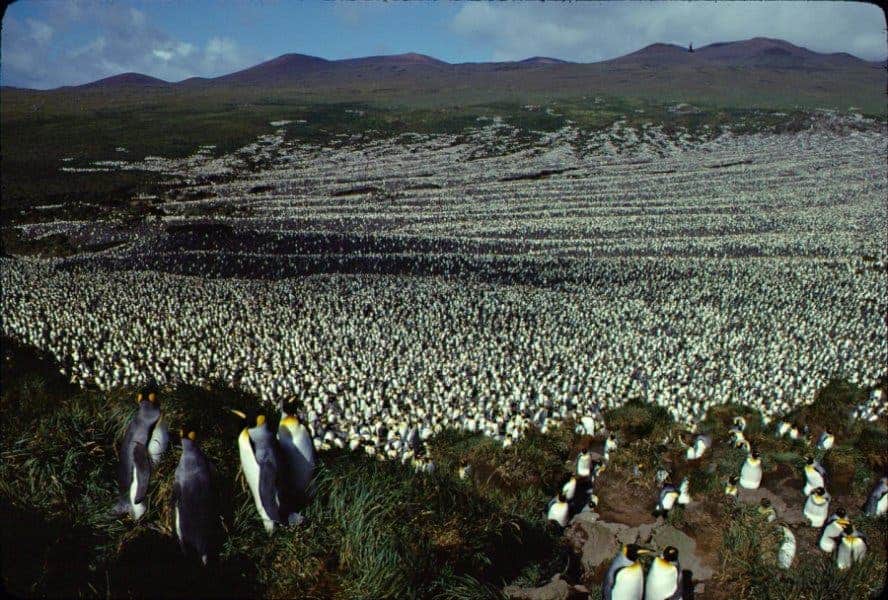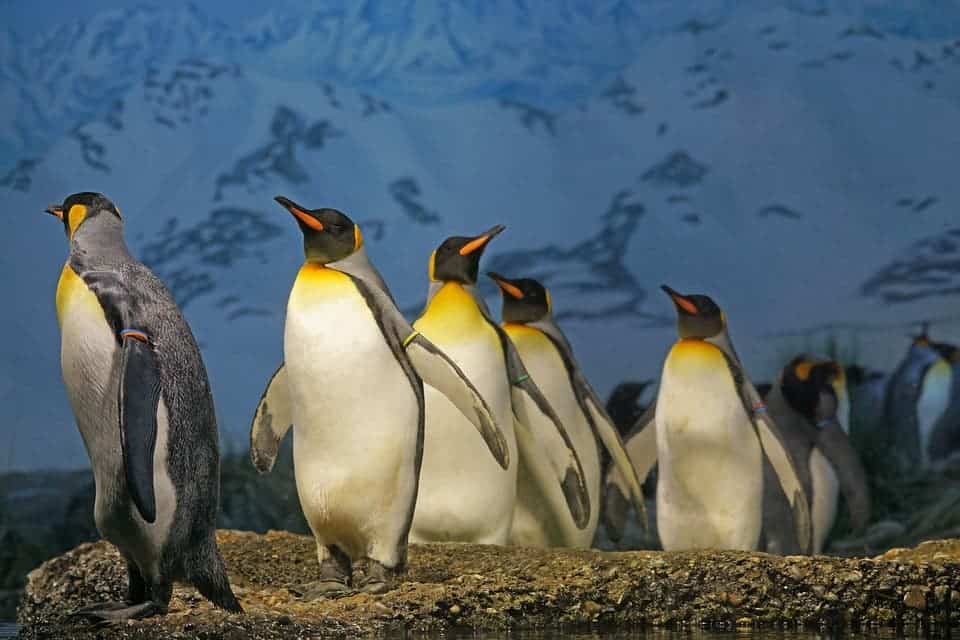
Up until the late 1980s, king penguins (Aptenodytes patagonicus) breeding in islands in the Southern Ocean formed the largest of the species’ colonies and the second largest penguin colony in the world. A recent aerial survey of the area, however, has found evidence of a dramatic collapse, with breeding pairs plummeting from almost 500,000 to only 60,000 in just 35 years.
The colony formed on the islands of Morne du Tamaris Colony, Ile aux Cochons, and Iles Crozet in the southern Indian Ocean was discovered and photographed by a cartographic team in 1962. At the time, it was estimated — based on surface measurements of the colony and breeding densities — to contain over 300,000 pairs of king penguins, a number which swelled to 500,000 breeding pairs in 1982–1988. This increase has been interpreted as a recovery from historical exploitation in the 19th century and changes in the functioning of trophic (food) webs.
But just as easily as the colony grew, so did it unexpectedly collapse. According to helicopter and satellite images of the Southern Ocean islands gathered from 2015 to 2017, researchers at the French National Center for Scientific Research in Villiers en Bois found that the colony’s numbers dropped by 88% in 35 years. As a result, nearly one-third of the world’s king penguins have disappeared.
The new estimate is considered to be fairly accurate. Unlike emperor penguins (Aptenodytes forsteri Gray), for which colonies can be detected from guano deposits on the ice and population estimates are difficult, king penguins breed on bare flat ground, at relatively constant densities, which makes detection and counting easy to do.
Ile aux Cochons (67 km2) is one of the three larger members of the Crozet archipelago and is a remote island that rarely sees visitors. The largest king penguin colony congregates about a mile from the eastern shore of hte island, right on the border of an ancient volcanic cone, the Morne du Tamaris.
The decline of the penguin colony seems to have occurred progressively — at the very least, the area occupied by the colony has progressively decreased, as evidenced by the gradual recovery of the vegetation around the colony’s periphery.
“The cause of the massive decline of the colony remains a mystery, and needs to be resolved,” the paper concludes. “Although the decline started at least 20 years ago, it appears to be ongoing, and the causes of the decline may still be active.”
It’s not clear what led to the collapse of this colony, but the French researchers led by Henri Weimerskirch have some hypotheses. One important factor seems to be the strong Dipole event in 1997 that affected the foraging capacity of king penguins on Ile de la Possession, the second most important island of Iles Crozet for breeding king penguins.

Although feral cats and house mice are not known predators of king penguin chicks, their behavior towards native fauna has changed. Previous studies have shown that both are now attacking albatross chicks and adults, causing a decline of at least some populations — and perhaps they may also be impacting king penguins.
Diseases and parasites may also be affecting the seabirds, reducing breeding success and the survivability of the adults. There is no data as of yet for the occurrence of any diseases on Ile aux Cochons but ticks — which are a vector of Lyme disease — are known to affect seabird populations. Also, Avian cholera is currently ravaging populations of seabirds on other islands in the Indian Ocean, like the albatross of Île Amsterdam and the penguins of Marion Island.
A catastrophic event seems to have been unlikely; there is no evidence of a tsunami hitting the island nor of any volcanic eruption. What’s more, the progressive decline of the colony suggests a gradual, long-term decrease in the colony rather than a sudden blow to the population.
Climate change is another important factor that might contribute to the king penguin’s colony collapse. Much of the decline seems to have begun in the late 1990s, a period which coincides with a strong El Niño weather event that warmed the southern Indian Ocean and impacted the colony’s food supply. Since then, there have been several more El Niño events. A previous study found that given current warming trends, 70% of the world’s king penguins could be forced to be move elsewhere by 2100 or risk perishing.
Scientific reference: Henri Weimerskirch, Fabrice Le Bouard, Peter G. Ryan, C.A. Bost. Massive decline of the world’s largest king penguin colony at Ile aux Cochons, Crozet. Antarctic Science, 2018; 30 (04): 236 DOI: 10.1017/S0954102018000226.


